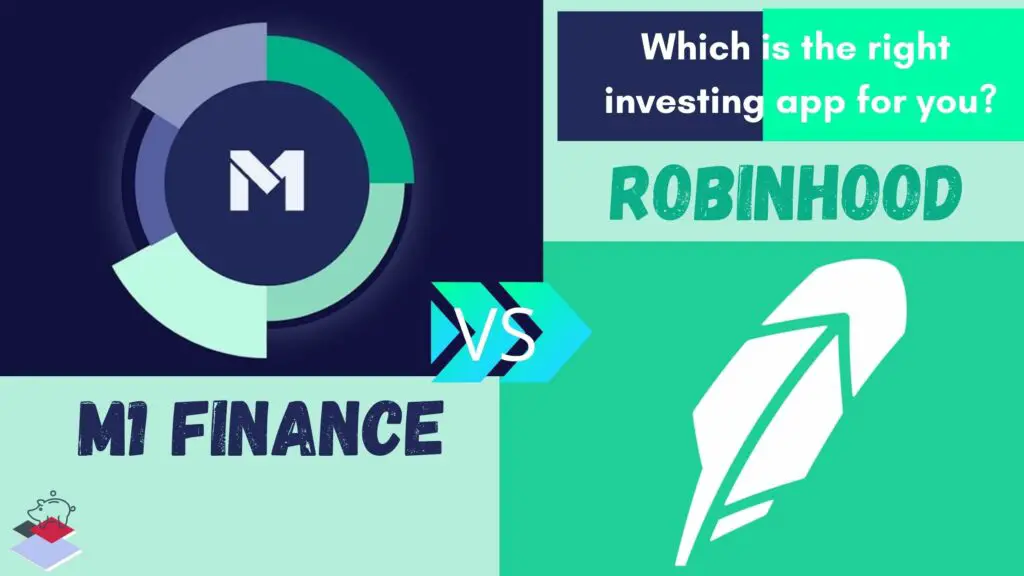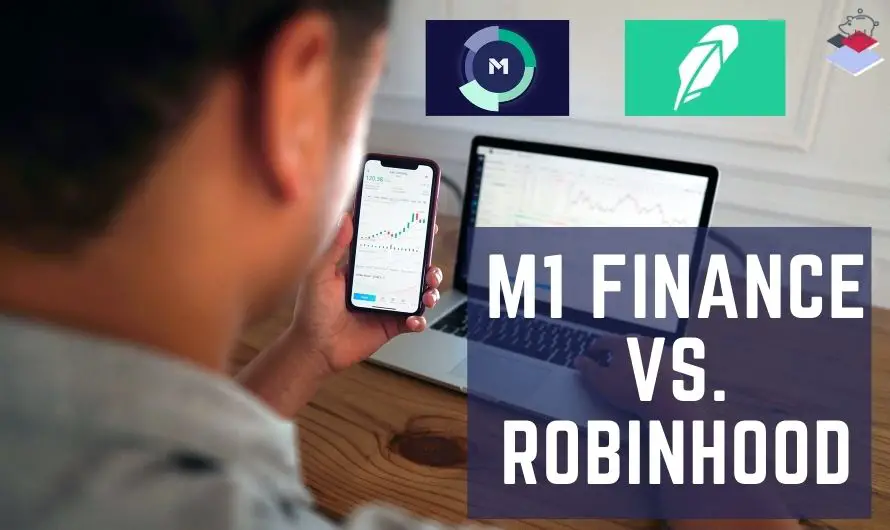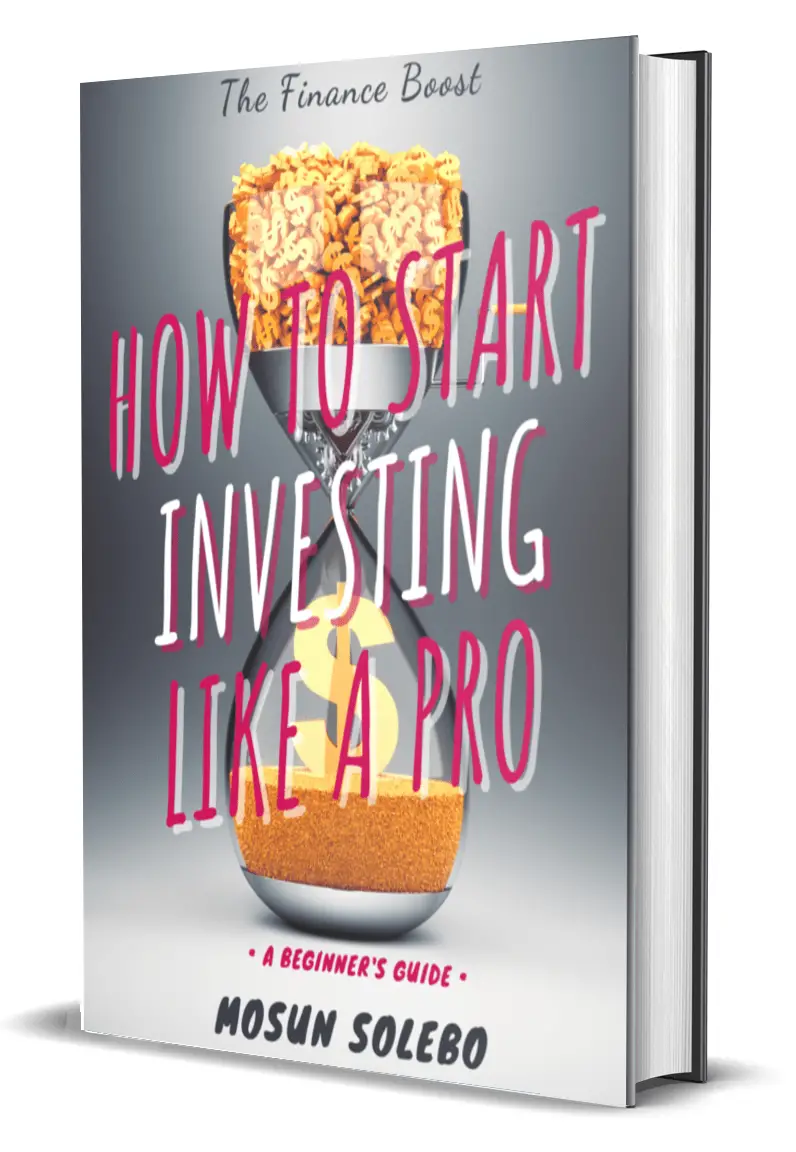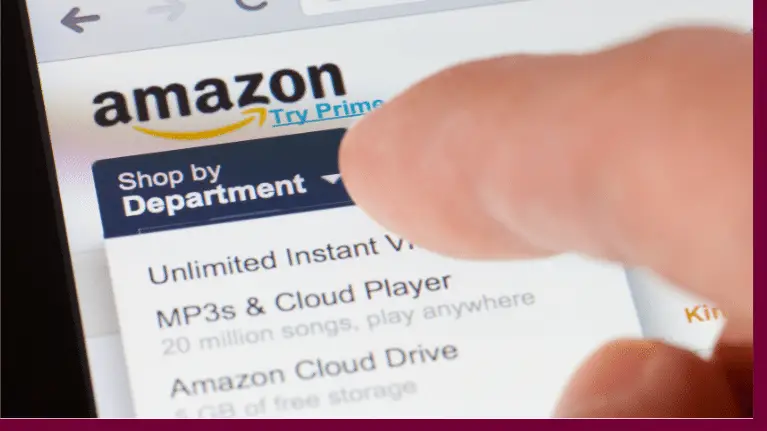Now more than ever, investing has become affordable and easier for everyone.
Gone are the days of calling your stockbroker to help you buy a stock nor checking the latest newspaper for static numbers from the New York Stocks Exchange.
Today, with the proliferation of the FinTech (Financial Technology) Industry, including investment platforms, smaller firms, and startups, we now have a chance to witness our money work for us.
Besides, we can even own a fractional part of a company and access our investments right at the tip of our fingertips through smartphones and mobile devices.
With that, have you ever heard of Micro-investing? From the root word micro, meaning small, you probably had an idea, don’t you?
Micro-investing has made it possible to invest even at an earlier age or with less money. It means that you don’t need thousands of dollars to get started (unlike before) and you can have a hands-on approach or a set-it-and-forget-it one.
Currently, two companies have become popular in the micro-investing space. Both were targeting younger and mobile audiences. These micro-investing apps allow you to invest small amounts of money in stocks, trade options, and even cryptocurrencies – hassle-free!
However, with many options out there, how do you know which is the right one?
In this post, let’s talk about M1 Finance and Robinhood– two investing platforms that will help you reach your financial goals. Discover your investing appetite and objectives, and find which one is your perfect match in this M1 Finance vs Robinhood Review 2021.
Related reading: How to Start Investing Your Money Like a Pro- The beginners guide.

M1 Finance vs Robinhood Summary Review
Categories | M1 Finance | Robinhood |
Price | Free | 0 |
Fees | $20 Inactivity Fee, Miscellaneous Fees, $100 Fee for outgoing direct account transfers | ACAT outgoing transfer fee of $75,Check fees of $35 to send a domestic check overnight, Wire fees to send or receive – $25 for domestic wires and $50 for international wires. |
Tradeable Securities | Stocks and ETFs only. | Stocks, ETFs, Options, Cryptocurrency, Fractional Shares |
Accounts | Taxable, Traditional, and ROTH IRA, Joint | Individual Taxable Accounts only |
Premium Account | M1 Plus Subscription ($125/year) | Robinhood Gold ($5/monthly) |
Platform Availability | Mobile App, Desktop Website | Mobile and Web |
Customer Support | Phone and Email, FAQs on the website, No Live Chat | Email, Social Media |
Security | Military-Grade 4096-bit encryption, two-factor authentication, registered by SEC and member of FINRA (Financial Industry Regulatory Authority) and SIPC (Securities Investor Protection Corporation) | Face and Fingerprint recognition, two-factor authentication |
What is M1 Finance?
M1 Finance was founded in Chicago, Illinois, in 2015 by CEO Brian Barnes. The M1 Finance business model was inspired by its CEO’s vision of having an investment tool to manage money easily.
You can start by opening an account for $100. However, if that is a bit of a stretch for you, you can deposit $50 first and then another $50 and then add it to your account.
If you’re opting for a retirement account, you will need $500 to get started.
Ultimately, M1 Finance offers a high-level of customization through its automated portfolio builder. Users can have portfolios that are tailored to their exact specifications. It made it possible through its “Pie Investing” feature.
M1 lets its users build these “Pies,” which is a visual representation of their portfolio. Each pie consists of up to 100 “slices,” or investments and each of these slices can be a stock, ETF (Exchange Traded Funds), or even another pie.
In other words, M1 Finance gets you fully invested with fractional shares. You can now buy shares of stocks for as little as $1 and put all your other investments in different baskets, “Pies.”

M1 Finance
Account Minimum: $100 ($500 for retirement accounts)
Fee: 0%
What is Robinhood?
Robinhood is an investing app that offers zero trade commissions, fractional shares of stocks, options trading, and cryptocurrency trading.
It was launched in 2013 and today has over 13 million downloads. Robinhood is designed with mobile investing in mind, but you can also start by signing up on their website.
Furthermore, Robinhood App provides easy trading with zero commissions. It is considered as a number one app for beginners or intermediate investors alike.
One core feature that attracts potential investors is its fractional shares of stock. It means you can now buy many or more company shares even if you don’t have a lot of money to get started. Also, it gives better chances of having a diversified portfolio.
The main perk of zero trade commissions and no account minimum is the unique primary proposition of the app.

Robinhood
$0 Trade Commission
$0 Account minimum
Key Features
Let us take a sneak peek at both the app’s pride and see how it can suit you.
M1 Finance Top Features
- Pre-built investment portfolios
- M1 Expert Pies
- Stock and fund investing
- High-level of customization
- Account rebalancing and dividend reinvestment
- Multiple account types
- Commission-free
Robinhood Top Features
- Stock, fund, cryptocurrency, and options trading available
- Fee-free trading
- Extended hours trading
- User-friendly, simple mobile app
- DIY investing
Who should use M1 Finance?

Essentially, M1 Finance allows you to customize your portfolio. And, if this is something that you highly value, then you might opt for this one. If you also like investment portfolio management, M1 Finance is your go-to app.
M1 automatically re-balances your portfolio when you add money, or you can click the re-balancing button (more on this later.) Moreover, if you’re seeking retirement investment, M1 fits perfectly for your long-term goals.
Further reading: Is M1 Finance Safe? Learn More About The Finance Super App- Full Review
Robinhood is best for?

On the other hand, if you’re more on the day-to-day trading side, you might consider going for Robinhood services.
Plus, if you want to explore the world of cryptocurrencies and options trading, Robinhood wins. Unlike M1 Finance, which automatically re-balances your unique portfolio, Robinhood will let you take matters into your own hand.
Hence, for more active traders who benefit from speculation and would like to get fully invested throughout their investing journey, Robinhood is the best app for you.
Read more: Robinhood App Review 2021- Is It The Right Investment App For You?
Fees and Commissions
Winner: Both
M1 Finance and Robinhood actively advertise their free trading or $0 charge on commission fees. Well, while it’s likely true, you may want to be aware of miscellaneous fees along the way.
For M1, there’s a minimum balance amount of $100 and $500 for a retirement account.
In contrast, Robinhood does not have a minimum investment requirement. Investors simply fund their accounts with enough money and they’re good to go.
Account types
Winner: M1 Finance
For the account types department, M1 Finance beats Robinhood. M1 offers a wide range of accounts which some seasoned investors take into account when choosing a brokerage or service platform.
M1 offers individual and joint investment accounts, traditional, ROTH, and even rollover IRAs. Their account portfolio also caters to business, LCC, corporate, and trust accounts.
Therefore, M1 provides you with many account options to choose from depending on your investment needs and goals. Especially if you value retirement, M1 will be your best friend.
On the other hand, Robinhood only offers individual investment account with margin (we’ll get to this later, I promise!) Hopefully, we can expect more traditional accounts in the future to compete with M1.
Investment Products
Winner: Robinhood
For this category, Robinhood has a slight advantage since it offers options and cryptocurrency trading. Although, both offer most ETF’s and individual stocks that are traded on major exchanges.
Moreover, for small investors seeking to invest in fractional shares, either platform works fine.
For instance, your $100 can buy Apple stock (AAPL) – with current stock value at $134.16. Now you would earn 0.74538 shares or roughly 74% of Apple shares!
Customer Service
Winner: M1 Finance
Phone customer support for M1 is available when the market is open, while email is open 24/7. However, Robinhood doesn’t have phone support. You can only access it through their corporate email and ask for assistance from their contact page and social media.
Therefore, M1 Finance wins in the customer support arena.
Security
Winner: almost closed, but M1 Finance garner a few points.
M1 Finance is secure since it is registered with the Securities and Exchange Commission, a member of FINRA (Financial Industry Regulatory Authority), and SIPC (Security Investor Protection Corporation).
If brokers like M1 go bankrupt, your securities are protected up to $500,000 per account. However, SIPC does NOT protect you from losing money through investing.
The app also uses military-grade encryption level, PIN Code, Facial Recognition, and Two-factor authentication to secure its users’ account log-in information.
Robinhood is also safe. It has two-factor authentication, touchID, FaceID, or custom pin codes available. Your account is protected by the high-level BCrypt hashing algorithm and never stored in plaintext; sensitive data are encrypted.
The app also uses TLS protocol and banking credentials. However, there have been a few reported incidents regarding Robinhood hurting it’s reputation of security. So, it’s up to you to decide.
Extra Features and Add-ons
Winner: Both
M1 Finance vs Robinhood both offers competitive features and add-ons but remember, they target different cohorts. Let’s find out their unique selling propositions.
For example, M1 Finance has a premium subscription account called M1 Plus. It costs a reasonable $125 annually with its discount perks.
Some of these perks include:
- An additional second daily trading window in the afternoon
- Lower interest rates on M1 Borrow Loan (2% only)
- Higher interest rates on cash held in M1 Spend Account
- Smart Transfers (read more here in full)
With M1 Spend, you will have an online banking account with no minimum balance required, plus it comes with a free debit card and cash backs on every purchase in select retail stores.
Meanwhile, with M1 Borrow, you can borrow against your portfolio balance. Keep in mind that margin loan/trading is risky, and you must pay back on your margin loan to keep your portfolio in check.
Another worth mentioning feature of M1 is its automatic portfolio rebalancing, dividend reinvestment, and tax-efficient harvesting.
All M1 dividends are received in cash. With the DRIP feature, dividends are reinvested back into the entire pie and not back into the specific stock. So, if you have $50 worth of dividends, it will be split up among all your assets mix in the investment pie.
M1 does not offer tax-loss harvesting, but it does provide tax-efficient harvesting. It means that when you sold security, M1 will choose to sell the shares with the smallest tax fee. Thus, returning to your set up of even and balanced portfolio.
With automated re-balancing, it saves you a lot of time and hassle. You choose the percentage you decide to invest in each stock or fund. Whenever dividends or new money comes into the account, M1 will automatically allocate it to reach the preferred asset allocation.
Additionally, you can set a “rebalance” anytime. Here’s an example.
If you initially set your stock allocation looks like this:
- Google- 20%
- Netflix-25%
- Apple- 20%
- Amazon-35%
Your investments will gain and lose value or rise and fall due to the stock market’s volatility. Some assets will grow faster than others, and you may need to move your money from one investment to another to maintain the exact asset allocation percentages you initially set.
Anytime, it can also look like this:
- Google- 34%
- Netflix-17%
- Apple- 20%
- Amazon-29%
Hence, the need to rebalance, and M1 does the job for you. (Robinhood does not offer this feature. To check and rebalance your asset mix, you have to do it by yourself manually.)
Now, let’s move on to Robinhood’s extra features and add-ons.
One cool thing about Robinhood is its Robinhood Gold at $5/monthly- cheaper than M1 Finance’s subscription premium account.
It offers margin loans, research articles for investment education, and a larger instant deposit.
When you want to invest with a borrowed money or have access to your funds for a while due to big purchases, or sudden buying situations, you can borrow from your investment through Robinhood’s margin loan.
Like M1 Borrow features, you must pay back the amount too and because trading on a margin loan is too risky, it is not quite recommended for beginner investors.
Most Robinhood users also love the premium articles provided for them. Traders specifically benefit the most from this unlimited access to stock research reports once you avail yourself of Robinhood Gold.
Furthermore, Robinhood has a high-yield savings account that comes with free ATM withdrawals. You can read more by clicking here.
You can also reinvest dividends from Robinhood plus trade on cryptocurrencies and options trading.
Unlike M1 Finance with a limited trading window, Robinhood is built for traders! You can buy and sell stocks and funds as long as the market is open.
However, it doesn’t offer tax-loss harvesting.
Pros and Cons
Both Robinhood and M1 Finance are great investing platforms to get started. But, take note of some of its strong points and drawbacks so you can make an informed decision.
PROS | CONS | |
M1 Finance | 1. No commission fee 2. Fractional shares 3. Flexibility and choose your own investment 4. Automatic Rebalancing 5. Pre-made or custom-made portfolio template | 1. Not many investment options 2. No research and statistic tools 3. Has no mutual fund investments 4. High premium account fee ($125/yearly) |
Robinhood | 1. Fractional share ($1/per share) 2. Cryptocurrency and options trading 2. Zero-trade commission 3. Easy to use mobile-app 4. Ideal for beginner investors | 1. Limited account types (no ROTH IRA, Joint, Retirement) 2. Manual portfolio rebalancing 3. Miscellaneous fees, no mutual funds and bonds. |
Final thoughts
With the battle on M1 Finance vs Robinhood, which is better and why?
Essentially, it all depends on what type of investor you are as well as your appetite for risk, needs, and goals.
Based on our assessment, for long-term and passive investors who constantly want to keep their portfolios in check, M1 Finance suits you.
On the other hand, if you’re an active trader who wants to buy and sell more than twice within a day, Robinhood will not limit you in terms of the trading window, unlike M1. So Robinhood is better.
For beginners, both M1 and Robinhood are a good start, but Robinhood offers more simplified and straightforward approach. Then, for veterans or already a player in the investing field, both should work fine.
More importantly, it would help if you always were equipped when it comes to investing your money. Do your research and an assessment of how you’ll be comfortable when growing your money. Either you’ll do it on your own, alone, with the help of Robo-advisors and DIY investing apps, or you can consult a financial advisor.
Better to seek help from experts with a bit of self-study, determination, and perseverance to thrive in your investing voyage. More importantly, you can start as early as now (don’t waste your time), and investing should be for everyone!
Whether you’re a student starting to learn about investing, in your middle 20s, or nearing retirement, has a fat bank account or not- take your chance to grow your money!
If you want to know more about how investing works you can download our free PDF guide and hover around the blog for related posts as we help you become the boss of your money.
What apps are you using for your investment journey? Which do you think is the best investing platform/brokerage for you? M1 Finance or Robinhood?
Tell us more in the comments down below!














0 Comments